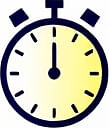Boosting Productivity Through Mental Clarity Exercises
 by Lilian Nienow
by Lilian Nienow
Discover practical mental clarity exercises that improve focus and efficiency for busy professionals and students. Learn how simple routines can enhance concentration and support effective time management strategies.
Mental clarity exercises offer a straightforward way to sharpen focus and build better habits. These routines help individuals maintain attention during tasks, making them essential for anyone seeking improved efficiency.
Why Mental Clarity Matters for Focus
In daily routines, clear thinking allows for deeper engagement with work. For instance, hyperfocus becomes easier when the mind is free from distractions. Simple exercises like deep breathing can reduce mental clutter and prepare the brain for concentrated efforts.
Many people face challenges with scattered thoughts, which affects overall output. By incorporating regular practices, such as short meditation sessions, individuals can achieve a state of calm that supports sustained attention. This approach is particularly useful for students preparing for exams or professionals handling multiple deadlines.
Exploring Effective Exercises
One common exercise involves focused breathing. This method requires sitting quietly and paying attention to each inhale and exhale. Over time, it trains the mind to let go of wandering thoughts, paving the way for better productivity.
Another technique is visualization. Here, people imagine completing tasks successfully, which builds mental clarity. This exercise not only boosts confidence but also aligns actions with goals, making it a key tool for time management.
For those new to these practices, starting with just five minutes a day can make a difference. Consistency is important, as repeated use strengthens the ability to enter a focused state quickly.
Linking to Time Blocking
Time blocking involves setting aside specific periods for tasks, and mental clarity exercises complement this by ensuring each block is used effectively. Before starting a blocked session, a quick exercise can clear the mind and enhance performance.
Imagine dividing the day into dedicated slots for work, study, and rest. When paired with clarity routines, this method minimizes interruptions and maximizes results. Professionals often report higher completion rates when they begin sessions with a brief mental reset.
Students can apply this by scheduling study blocks and preceding them with simple exercises. The combination helps in absorbing information more effectively and retaining it longer.
Practical Tips for Implementation
To get started, choose exercises that fit into a busy schedule. Morning routines might include a few minutes of quiet reflection to set the tone for the day. This practice can lead to improved decision-making throughout activities.
Here are some actionable steps:
- Begin with breathing: Inhale for four counts, hold for four, and exhale for four. Repeat several times to center thoughts.
- Use breaks wisely: During short pauses, close eyes and focus on a positive outcome for the next task.
- Track progress: Keep a simple journal to note improvements in focus after exercises.
These tips are adaptable, allowing for personalization based on individual needs. Over weeks, users often notice enhanced energy levels and fewer distractions.
Benefits for Daily Life
The advantages extend beyond work. For busy professionals, clearer thinking reduces stress and improves work-life balance. Students find that regular exercises help with memory retention and exam preparation.
In team settings, individuals with better mental clarity contribute more effectively, fostering collaboration. This ripple effect highlights how personal practices can influence broader outcomes.
Ultimately, integrating these exercises into routines builds resilience against daily pressures. The result is not just better focus but also a more fulfilling approach to tasks.
By prioritizing mental clarity, anyone can transform their productivity. With consistent effort, the benefits compound, leading to lasting changes in how time is managed and goals are achieved.
